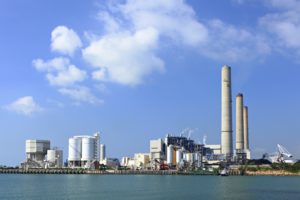In response to petitions from the Utility Water Act Group (UWAG) and the Small Business Administration’s Office of Advocacy (SBA), EPA Administrator Scott Pruitt announced that the Agency will reconsider its November 3, 2015, final Effluent Limitations Guidelines and Standards for the Steam Electric Power Generating Point Source Category (ELGs). In conjunction with Pruitt’s decision to reconsider the ELGs, the administrator also issued a notice delaying the rule’s compliance deadlines pending resolution of claims against the rule that have been filed with the U.S. Court of Appeals for the 5th Circuit. The Agency adds that it intends to request that the 5th Circuit stay the pending litigation for 120 days (until September 12, 2017), “by which time the Agency intends to inform the Court of the portions of the rule, if any, that it seeks to have remanded to the Agency for further rulemaking.”
First-time limits on metals
EPA’s 2015 rule revised and strengthened the technology-based ELGs for a number of discharges from steam electric power plants. The final rule set the first federal limits on the amount of toxic metals and other pollutants that power plants are allowed to discharge in several of their largest sources of wastewater based on technology improvements in the power industry over the past 3 decades. Generally, the final rule established new requirements for wastewater streams from five processes and by-products associated with steam electric power generation—flue gas desulfurization (FGD), fly ash, bottom ash, flue gas mercury control, and gasification of fuels such as coal and petroleum coke.
Among its provisions, the ELGs set zero discharge pollutant limits for flue gas mercury control wastewater and stringent limits on arsenic, mercury, selenium, and total dissolved solids in coal gasification wastewater based on evaporation technology. Each plant was required to comply between 2018 and 2023, depending on when it needs a new Clean Water Act permit.
BAT not good enough
The bottom line in the two petitions is that EPA’s limits are unachievable with the available technology.
“The cost issues are exacerbated by EPA’s overly ambitious assumptions about facilities’ ability to comply with the limits imposed in the rule,” states the UWAG. “In fact, in many instances, facilities are not able to meet the limits with the technologies that EPA identified as the ‘best available technology economically achievable’ (BAT). Actual costs are, therefore, much higher than EPA predicted. Either plants cannot comply at all or they are being forced to design, test, and try unproven technologies in addition to, or in lieu of, the model technologies in the hope of developing a compliance strategy. The Rule should be reconsidered so that its true costs can be accounted for, as required by the Clean Water Act.”
The SBA asserts that in its final rulemaking, the EPA failed to properly consider the special economic circumstances of small entity-owned power plants as required by the Regulatory Flexibility Act. As does the UWAG, the SBA cites technical flaws in the ELGs. The most significant issue, according to the SBA, is the bottom-ash limit, which “drives the highest costs—hundreds of millions of dollars annually—and controls the least amount of toxic pollution.”
New AEP data
It its notice delaying the compliance dates, the EPA notes the UWAG petition points to new data claiming that plants burning subbituminous and bituminous coal cannot comply with the rule’s limitations and standards for FGD wastewater through use of EPA’s model technology. “Moreover, the petitions say that new data have been collected by American Electric Power [AEP] that ‘illustrate that variability in wastewater management can also impact performance at bituminous plants such that additional technologies beyond EPA’s model technology will be needed to achieve the limits,’” says the Agency. “EPA wishes to review these data.”
The final ELGs, the petitions for reconsideration, EPA’s notice of delay of compliance deadlines, and related documents are available here.

